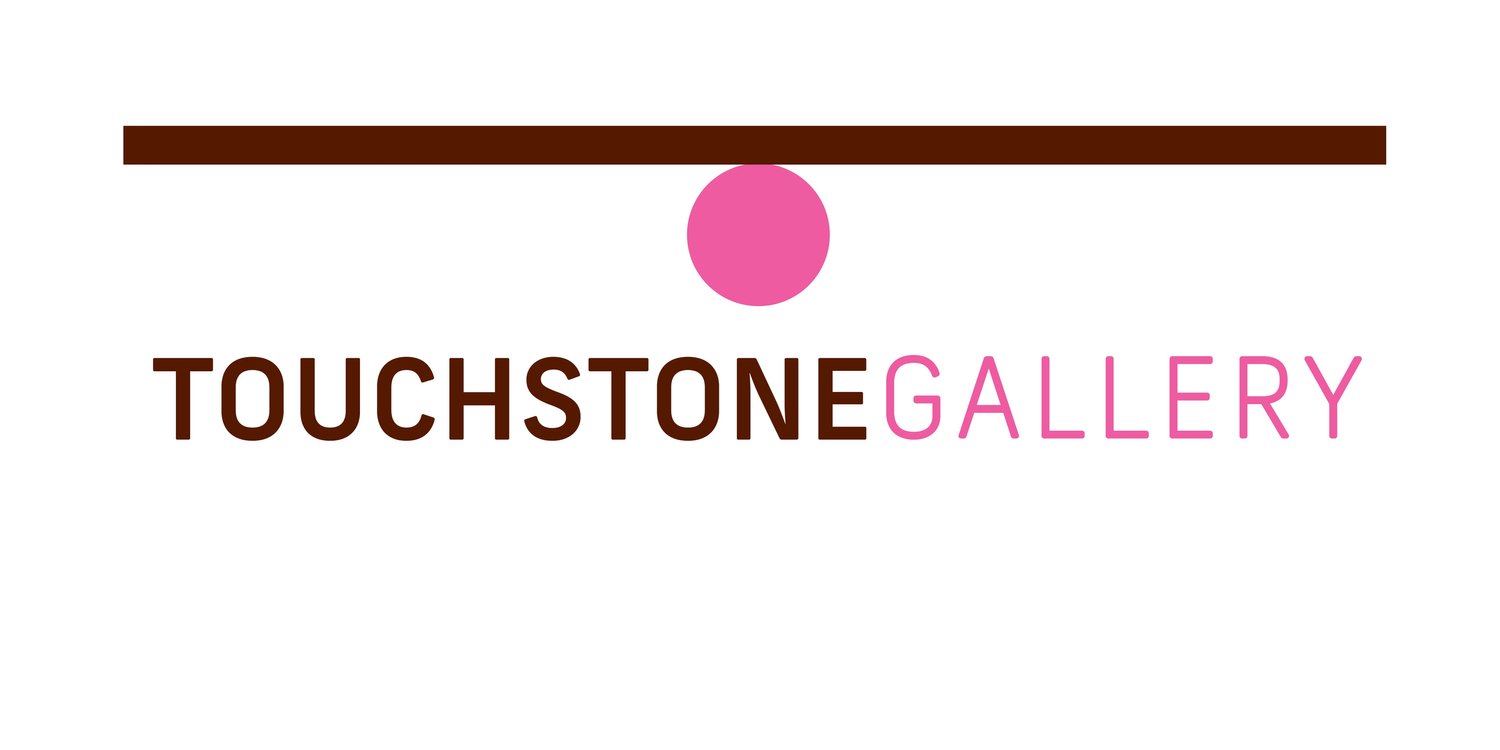New Moon, 24” x 18”, acrylic paint, pencil, conte crayon, collage on canvas
New member Chris Tucker Haggerty does not rely only on designated artists’ materials to make her art. Her mixed-media work incorporates “things that have known life” and “discarded bits that have a history.” Many of her pieces begin with found objects that she arranges as elements of a design and then builds upon them as she goes along. Sometimes the origins of the objects remain identifiable, sometimes they are “sublimated”—reconfigured to suggest a new identity.
Haggerty’s use of natural objects is related to Native American spirituality, which she learned about through many trips to the American Southwest over the years. Native American culture features circles, and “circles,” she says, “feel right to me.” They appear frequently in her work. In trying to deconstruct what they mean to her, Chris offers the following: “Circles gather you in and hold you safe; they are infinite, with no beginning or end; they’re in perpetual motion—dynamic. They connote Divine Providence and security. The circle represents the sun, moon, and cycles of the seasons, as well as the cycle of death to rebirth; it represents wholeness and completeness.”
Julianna’s Wedding Day, 30” x 24”,acrylic paint, pencil,crayon, maps
Raised Catholic, Chris was struck by the sight of Catholic churches in pueblos that she visited. Still active, these buildings reflect a “convergence of spiritual traditions.” The communities have, in a sense, “their feet in two waters.” They also reflect a parallel between the Virgin Mary and Mother Nature. Haggerty has noticed paintings of corn husks on the walls, and in one, a female doll hung where one might expect to see a crucifix. In contrast to Native American pantheism, Haggerty describes her own belief as “panentheism”—the belief that urges respect for a worldview which sees God in all things.
Afghan Apocalypse, 30”x24”, acrylic paint, conte crayon, aqua color, pencil, paper, foil, feather
Haggerty started painting at age four, majored in art in college and later studied design at The George Washington University. Using that training, she worked for newspapers doing layout and illustration, and she also taught graphic design at Marymount University in Arlington, Virginia. Meanwhile, the field was becoming increasingly electronic, depending more and more on technical software, a direction she did not wish to pursue in lieu of theory. A two-year leave spent in London reconnected her with her fine-arts roots, and she elected to teach that subject upon her return to Marymount. Her interest in design theory—color, composition, hierarchy, etc.—continue to inform her work. These principles, she finds, help in teaching painting to small groups in her home.
Her MFA thesis work, Feminine Foothold, a series of symbolic quilt-portraits, fueled her current direction from purely nonobjective to the inclusion of figurative references, addressing what she calls “an age-old desire for a human element in my work.”
—Sonya Michel



